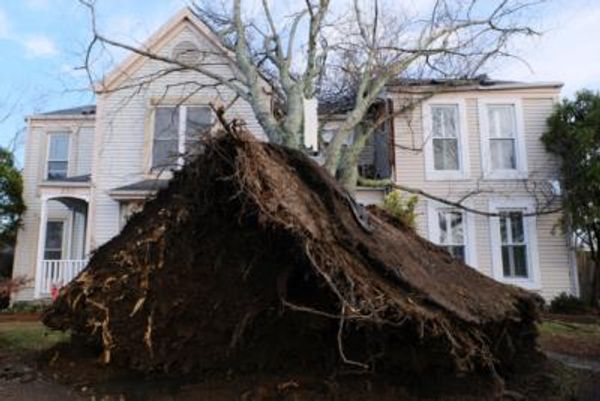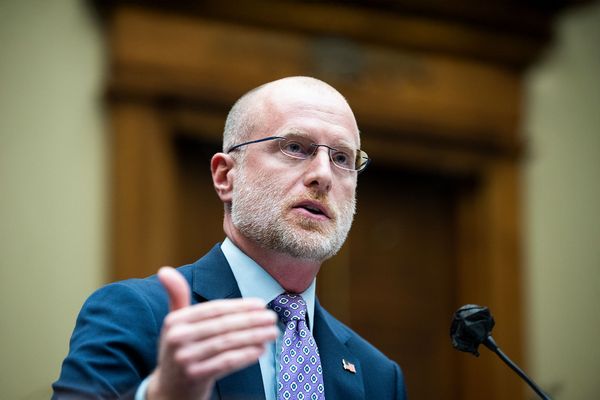
Where were you when the lights went out?
It doesn't matter. General Motors (GM) -) has got you covered.
DON'T MISS: Cathie Wood plows another $6 million into one cheap stock
Obviously nobody wants a blackout, but the sad fact is that they are becoming more frequent.
Power outages have increased 64% from the early 2000s, according to Climate Central, and weather-related outages power outages surged by about 78% during 2011-2021 compared with 2000-2010.
And, to make matters worse, the average duration of power outages doubled from 2015 to 2021, according to the U.S. Energy Information Administration.
You're going want some backup when the lights go out, and while it's better to light one candle than curse the darkness, you may want to put away the matches and turn to your car.
GM said on Aug. 8 that it will expand its vehicle-to-home, or V2H, bidirectional charging technology across its portfolio of Ultium-based electric vehicles by model year 2026, so that electric vehicles will be able to provide backup power during blackouts.

Chevrolet
Offsetting energy during peak demand time
The first vehicles to have the technology will include the 2024 Chevrolet Silverado EV RST, followed by the 2024 GMC Sierra EV Denali Edition 1, 2024 Chevrolet Blazer EV, 2024 Chevrolet Equinox EV, 2024 Cadillac Lyriq and the upcoming Cadillac Escalade IQ, which will be revealed on Aug. 9.
Prior to the announcement, GM had only confirmed the 2024 Silverado EV RST, which is planned to launch later this year, would have bidirectional charging.
Customers can access the technology on compatible GM EVs through GM Energy’s available Ultium Home offerings, and the GM Energy Cloud, a software platform that allows users to manage the transfer of energy between GM Energy assets and the home.
The technology allows consumers to store and transfer energy to help offset electricity needs during peak demand days and lessen the impact of power outages.
GM's rival Tesla's (TSLA) -) has a product called Powerwall that can be installed in garages or basements to store solar energy and provide backup power.
The battery system sells for $8,700 before federal tax credits and stores solar energy to provide backup power when the lights go out.
Tesla CEO Elon Musk said at Tesla's Investor Day in March that he expects his cars to be capable of bidirectional charging within the next two years, though he doesn't think it's something many people will take advantage of.
'Mini power plants on wheels'
"I don’t think very many people are going to want to use bidirectional charging, unless you have a Powerwall," he said, "because if you unplug your car, your house goes dark, and this is extremely inconvenient."
Other bidirectional vehicles include Ford's (F) -) F-150 Lightning pickup, the Nissan's (NSANY) -) Leaf, the 2023 Fisker (FSR) -) Ocean, Kia's EV9.
Last year, GM announced a collaboration with Pacific Gas and Electric Co., where they the two would test GM's EVs as on-demand power sources for homes in PG&E’s service area in California.
In May, the California Senate has greenlighted SB 233, which would require all new EVs sold in California by 2030 to come equipped with bidirectional charging.
“The battery capacity in today’s electric vehicles give them the potential to be mini power plants on wheels," Sen. Nancy Skinner, D-Berkeley said in a statement. "That’s crucial as California continues to face unprecedented impacts from climate change, including record heatwaves, wildfires, and destructive storms that can lead to power outages."
Skinner noted that Californians have increasingly responded to power outages and rolling blackouts by purchasing backup generators, especially diesel generators that emit significant amounts of air pollution.
EV batteries, which currently have the ability to power a home for up to three days, she said, are a green alternative to backup generators.
Get investment guidance from trusted portfolio managers without the management fees. Sign up for Action Alerts PLUS now.







